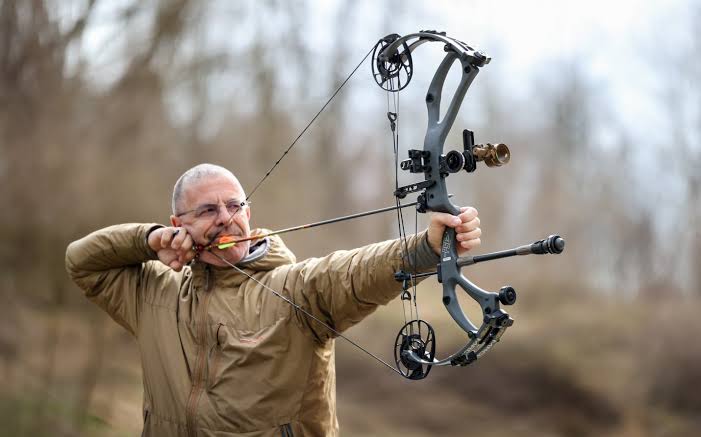Are you thinking about getting into archery or hunting but feeling overwhelmed by all the bow options out there? Don’t worry—you’re not alone! One of the most popular choices among beginners and pros alike is the compound bow. But what exactly is a compound bow, and why is it such a big deal? In this guide, we’ll break it all down in simple terms, so you’ll know exactly what to look for when picking the perfect bow for your needs.
What Is a Compound Bow?
A compound bow is a modern type of bow that uses a system of pulleys, or “cams,” and cables to make drawing the string easier. This design allows the archer to hold the bow at full draw with less effort, giving more time to aim and improving accuracy. It’s like having a little extra muscle power without hitting the gym!
Why Choose a Compound Bow?
So, why do so many people love compound bows? Here are a few key reasons:
- Accuracy: The pulley system helps you hold the bow steady, giving you better aim.
- Power: Compound bows shoot arrows faster and with more force than traditional bows.
- Adjustability: You can tweak the settings to fit your strength and skill level.
- Compact Size: They’re generally smaller and easier to handle, especially in tight spaces like forests.
Key Parts of a Compound Bow (Without Getting Too Technical!)
Understanding the basic parts of a compound bow can help you make a smart choice. Here’s a quick rundown:
- Riser: The main body of the bow where you hold it.
- Limbs: The flexible parts attached to the riser that bend when you draw the bow.
- Cams: The round or oval wheels that make pulling the string easier.
- String & Cables: These connect everything together and launch the arrow when you release.
- Sight: Helps you aim more accurately.
- Arrow Rest: Where your arrow sits before you shoot.
How to Choose the Right Compound Bow for You
Picking the perfect compound bow isn’t as hard as it sounds! Just keep these factors in mind:
1. Draw Weight
This is how much force it takes to pull the string back. Beginners might start with a lower draw weight (around 40-50 lbs), while more experienced archers or hunters might prefer heavier options for more power.
2. Draw Length
This is how far back you can pull the string. It needs to match your arm length. Too short or too long, and your shots will be off.
3. Let-Off
This refers to how much the draw weight reduces when you’re holding the bow at full draw. Higher let-off (like 80%) means it’s easier to aim without getting tired.
4. Axle-to-Axle Length
This is the distance between the bow’s cams. Shorter bows are great for hunting in tight spaces, while longer ones might offer more stability for target shooting.
5. Budget
Compound bows come in a wide price range. You don’t need to break the bank, but remember—you get what you pay for! Find a balance between quality and price that fits your needs.
Compound Bow Maintenance Tips
Taking care of your compound bow is key to keeping it in top shape. Here’s how to do it:
- Check the Strings Regularly: Look for frays or wear and replace them when needed.
- Keep It Clean: Wipe down the bow after use, especially if you’ve been out in the rain or dirt.
- Store It Properly: Keep your bow in a cool, dry place, and avoid leaving it in hot cars or damp basements.
- Get It Tuned: Just like a musical instrument, your bow needs tuning now and then. Visit a pro shop for adjustments.
Common Mistakes Beginners Make (And How to Avoid Them!)
Everyone starts somewhere, but you can skip a few rookie mistakes by keeping these in mind:
- Skipping Proper Form: Take the time to learn good shooting form from the start.
- Choosing the Wrong Draw Weight: Don’t go too heavy—start light and work your way up.
- Ignoring Safety Gear: Always use arm guards and finger tabs to protect yourself.
- Not Practicing Enough: Like anything else, practice makes perfect!
Conclusion: Ready to Take Your Shot?
A compound bow is an awesome tool whether you’re just getting into archery or you’ve been shooting for years. It’s powerful, accurate, and adjustable to fit your needs. By understanding the basics and avoiding common mistakes, you’ll be hitting bullseyes in no time. So, get out there and take your shot—who knows, you might just discover a lifelong passion!
FAQs About Compound Bows
1. Is a compound bow good for beginners?
Absolutely! Compound bows are great for beginners because they’re easier to draw and aim compared to traditional bows.
2. How much does a good compound bow cost?
You can find decent beginner models for around $200-$400, but high-end bows can go over $1,000.
3. Can I use a compound bow for hunting?
Yes, many hunters prefer compound bows because of their power and accuracy.
4. Do I need a license to own a compound bow?
It depends on where you live. Check your local laws, but in most places, no license is required just to own one.
5. How often should I replace the bowstring?
It’s a good idea to replace the string every 1-2 years, depending on how often you use the bow.
6. What’s the difference between a compound bow and a recurve bow?
A compound bow uses cams and cables to make drawing easier, while a recurve bow has a more traditional, simpler design.




